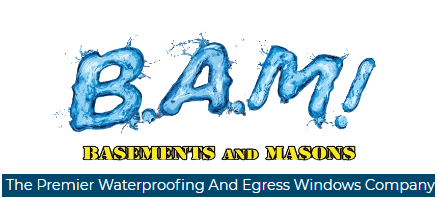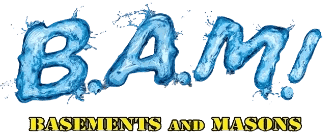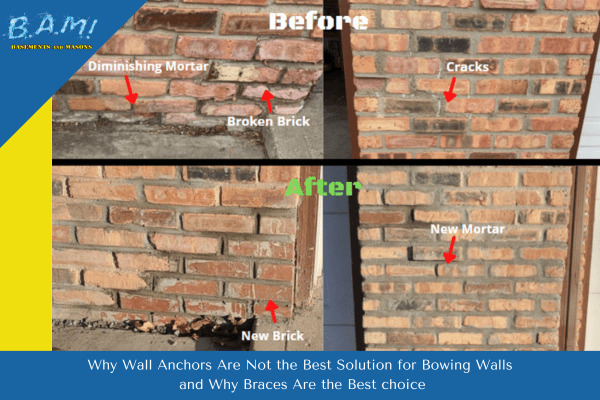Preserving the Past, Strengthening the Present
There’s a timeless beauty in the craftsmanship of historic buildings, and much of that charm is owed to the art of tuck-pointing. This ancient masonry technique, also known as pointing or re-pointing, involves repairing and restoring the mortar joints between bricks, stones, or masonry blocks. Whether you’re a homeowner looking to preserve your property’s heritage or a mason seeking to refine your skills, understanding the art of tuck-pointing is essential. Let’s dive into the world of tuck-pointing, exploring its history, techniques, and benefits.
A Glimpse into History: Tracing the Origins of Tuck-Pointing
Tuck-pointing isn’t just a recent innovation; its roots can be traced back to ancient Egypt and Rome. The technique was initially used to imitate the appearance of finely jointed stonework without the need for expensive, perfectly cut stones. This deception, achieved by using different-colored mortar to create the illusion of precision, was both a practical and aesthetic solution. Over time, tuck-pointing evolved into a method of enhancing the strength and durability of brick and masonry structures, making it an integral part of architectural history.
Tuck-pointing is more than just a practical construction method; it’s also an art form. Skilled masons carefully select mortar colors that match the original aesthetics of a building, and with precision, they create thin, crisp lines between bricks. The result is a visually stunning facade that appears as if it were constructed yesterday, despite the passage of time.
The Art and Science of Tuck-Pointing: Process Unveiled
At its core, tuck-pointing involves the careful removal of damaged or deteriorated mortar joints and the subsequent replacement with fresh mortar. The process requires meticulous attention to detail, as it not only restores the structural integrity of the masonry but also revives its visual appeal. Here’s a step-by-step breakdown of the tuck-pointing process:
Preparation: Before any work begins, the area to be tuck-pointed is thoroughly cleaned to remove dirt, debris, and loose mortar. This ensures proper adhesion of the new mortar.
Mortar Removal: Skilled artisans use specialized tools to carefully remove the old mortar from between the bricks or stones. This step requires precision to avoid damaging the surrounding masonry.
Mixing Mortar: The new mortar mixture is prepared to match the color and composition of the existing mortar. Achieving the right consistency and color is essential for a seamless blend.
Application: The new mortar is skillfully placed into the joints, ensuring it bonds securely with the masonry. A slightly recessed groove is created to accommodate the thin strip of contrasting mortar that gives tuck-pointing its distinctive appearance.
Finishing Touches: Once the mortar has set but is not completely cured, the excess mortar is carefully scraped away, leaving a flush, attractive finish.
Benefits Beyond Aesthetics: Why Tuck-Pointing Matters
Tuck-pointing goes beyond mere aesthetics; it provides numerous practical benefits that are essential for maintaining the health of your home:
Structural Integrity: Deteriorated mortar joints can compromise the stability of a masonry structure. Tuck-pointing strengthens the overall integrity, extending the life of your building, preventing the need for costly and extensive repairs down the road.
Weather Resistance: Properly executed tuck-pointing enhances the weather resistance of a building, preventing water intrusion and moisture-related issues. Reducing the risk of water damage, mold, freeze-thaw cycles, and cracks.
Energy Efficiency: Well-tuck-pointed walls offer better insulation, helping to regulate indoor temperatures and reduce energy consumption.
Property Value: A well-maintained exterior enhances your home’s curb appeal and resale value, making tuck-pointing a smart investment.
Preservation of History: For historic properties, tuck-pointing ensures the continued existence of historical architecture, maintaining its significance for future generations.
Time-Honored Craft for Modern Preservation
Tuck-pointing is more than a construction technique; it’s a celebration of history and a testament to the enduring appeal of brick and masonry. Through meticulous craftsmanship and a deep understanding of both architecture and materials, tuck-pointing specialists bring new life into old structures, keeping the past alive while strengthening the present. Whether you’re seeking to restore a historic property or simply want to enhance the beauty and durability of your home, tuck-pointing stands as a timeless solution that bridges the gap between tradition and modernity.
Give BAM basements and Masons of Des Moines a call for all your masonry Tuck Pointing needs. With over 100 years combined masonry experience, we have the knowledge and expertise for your home. We offer free estimates and service in Des Moines, IA, and surrounding areas. We are a locally founded, owned, and operated small business. Bam basements is the highest award-winning foundation repair company in Central Iowa! The community has chosen us for best of Des Moines Cityview for the past 2 years, People’s choice awards and Ankeny community votes. When your home needs foundation work, call the best in Central Iowa. We have been around for over 11 years and continue to grow. Trust BAM with your home and get an honest upfront, no pressure estimates and the right solution for your home.


